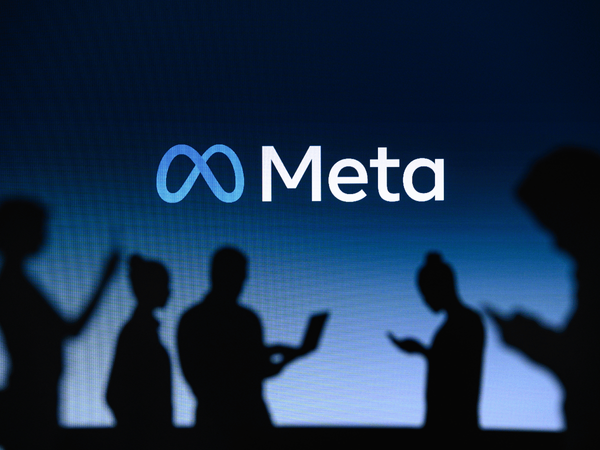3 Effective Strategies for Seasonal Product Promotion to Loyal e-Commerce Customers

In the world of e-Commerce, building a base of loyal customers is a significant (and necessary) achievement. These are the individuals who consistently return to your online store, trust your brand, and often advocate for your products. It is imperative that business owners focus their attention on this segment of their customer base since this is who should be continually marketed to. Seasonal promotions are one of many ways you can engage current, past, and repeat customers. While maintaining customer loyalty is crucial, it's equally important to seize opportunities for seasonal product promotions to keep your dedicated audience engaged and boost sales. In this blog post, we'll explore three effective strategies that e-Commerce businesses can use to promote products seasonally to their existing loyal customer base, complete with real-life examples.
1. Personalized Seasonal Recommendations
One of the most powerful ways to promote seasonal products to loyal e-commerce customers is by offering personalized recommendations tailored to their preferences and purchase history. As we have mentioned before, analytics and supporting data are crucial in ensuring the success of a business. By utilizing data analytics and machine learning algorithms, you can curate product suggestions that align with each customer's unique interests and past buying behavior. We often see this with Facebook and other websites where users get popup messages and ads that are targeted to them because of their search history or past engagement with certain brands.
Example: Amazon's Personalized Product Recommendations
Amazon, the e-Commerce giant, excels in offering personalized product recommendations to its loyal customers. Their recommendation engine analyzes browsing history, purchase history, and even items added to the cart to suggest products that customers will likely be interested in. During seasonal promotions like Black Friday or Christmas, Amazon tailors these recommendations to include relevant seasonal products such as holiday decor, gifts, or winter clothing. It also will recommend products on sale or discounted. This often happens with items on the pricier side (like electronics, furniture, etc.). Users will be recommended items that are heavily discounted or part of a deal, all of which were recommended because Amazon’s engine looked through users’ past search behavior and shopping trends, and identified the products that match those types of criteria.
How to Implement Personalized Recommendations:
Collect Customer Data: Gather data on customer preferences, purchase history, and browsing behavior. Tools like Google Analytics and customer relationship management (CRM) software can help. Some purchase platforms also offer this type of data collection and analytics that can help you see who is buying what from you and what you can suggest to them.
Use Recommendation Algorithms: Invest in recommendation algorithms or third-party services like Nosto, which can analyze customer data and generate personalized product suggestions. Algorithms get a bad rap, but they really can be helpful in automating some things. They also help in mining through large datasets so that you can spend more time on other areas of your business.
Segment Your Audience: Group customers into segments based on their preferences and behavior. This allows for more targeted recommendations. Email marketing platforms allow you to separate your audience into segments based on a label you set. This segmentation can come in handy with email marketing automation and list building as well. Utilize segmentation as best you can.
Tailor Seasonal Promotions: When a holiday or season approaches, curate a selection of seasonal products and showcase them prominently to the relevant customer segments. This allows you to tailor promotions to the parts of your audience that may receive a certain product better than others.
2. Exclusive Loyalty Programs and Early Access
Rewarding loyal customers with exclusive access to seasonal promotions and special offers can create a sense of exclusivity and excitement, making them feel appreciated and valued. By launching loyalty programs that grant early access or unique discounts, you can incentivize your customers to shop during specific seasonal events.
Example: Sephora's Beauty Insider Program
Sephora, a popular beauty retailer, has a highly successful loyalty program called Beauty Insider. Members of this program receive exclusive perks, such as early access to new product launches and special seasonal sales. During the holiday season, Beauty Insiders often enjoy first dibs on limited-edition holiday beauty collections, creating a sense of urgency and excitement among loyal customers. This plays on the idea of FOMO (Fear of Missing Out). No one likes to feel excluded or like they are missing out; especially when a sale is involved. By having members-only events, sales, and promotions, you can play on the idea of FOMO, and gain more customers who want to feel included.
How to Implement Exclusive Loyalty Programs:
Design a Loyalty Program: Create a loyalty program with different tiers or levels, offering increasingly valuable rewards as customers advance. This can be higher discounts, the ability to earn more points, and exclusive tier rewards.
Early Access: Offer loyal customers early access to seasonal promotions, allowing them to shop before the general public. This exclusive shopping experience will help set you apart from the rest.
Exclusive Discounts: Give members exclusive discounts or special offers during seasonal events. Think of it as a way of saying “Thank you!”
Communication: Clearly communicate the benefits of your loyalty program to your customers through email, social media, and your website. Be transparent and communicate any updates to your rewards programs as well. Consider having an FAQ page that answers questions about your program should anyone need more clarification. It’s better to overcommunicate than to not.
3. User-Generated Content and Social Proof
Leveraging user-generated content (UGC) can be a compelling way to promote seasonal products to your loyal customer base. Encourage your customers to share their experiences with your products on social media and feature their content on your website. This not only provides social proof but also engages your customers and fosters a sense of community. This can be done paid or organically as well. Just ask your audience if they would be willing. That also communicates to others that your audience engage with your brand in more ways than just purchasing. They also share the word and recommend you to others. Free marketing at best!
Example: Starbucks' Red Cup Contest
Starbucks, the global coffeehouse chain, is well-known for its seasonal promotions, especially the annual release of its holiday-themed "red cups." To promote these cups, Starbucks launched the #RedCupContest, encouraging customers to share photos of their drinks in the iconic red cups on Instagram. Customers eagerly participated, and Starbucks featured their UGC on their website and social media channels, creating a buzz around their seasonal products.
How to Implement User-Generated Content Strategies:
Create a Hashtag: Develop a unique and catchy hashtag related to your seasonal promotion or product. Be sure to really look at your hashtag and pick something that is bother relevant to your promotion or product while also being appropriate. Some hashtags have been misconstrued in the past, leading to some funny (but less than flattering) fails.
Encourage Participation: Incentivize customers to participate by running a contest or offering prizes for the best UGC. This makes the engagement fun and collaborative. Friendly competition is always a fun and easy way to get others involved in your cause.
Feature UGC: Showcase user-generated content on your website, social media, and marketing materials to build trust and authenticity. Showcase how connected you are with your customers.
Engage and Interact: Respond to and engage with customers who contribute UGC, showing appreciation for their involvement. This will show your current customers your transparent and authentic side!
Don’t Miss Out On Seasonal Promotions
Promoting seasonal products to loyal e-commerce customers is a strategic approach that can boost sales, foster customer engagement, and reinforce brand loyalty. By implementing personalized recommendations, exclusive loyalty programs, and user-generated content strategies, you can create exciting seasonal campaigns that resonate with your loyal customer base. Remember that the key to success lies in understanding your customers' preferences and behavior, offering them exclusive benefits, and building a sense of community around your brand. With these strategies in place, your e-commerce business can thrive during every season of the year.





